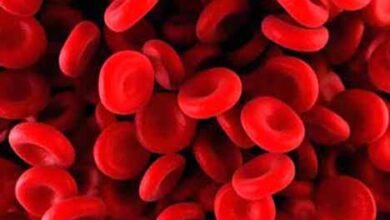
रसायन विज्ञान से संबंधित-107.
| 1. मिश्र धातु (Alloy) – धातु और अधातुओं के ठोस विलयन जिसमें धात्विक गुण होते हैं उसे मिश्र धातु कहते हैं.
2. अमलगम (Amalgam) – मरकरी की अन्य धातुओं के साथ मिक्ष्र धातु को अमलगम कहते हैं. 3. उभय धर्मी (Amphoteric) – वे पदार्थ जो अम्लीय और क्षारीय दोनों प्रकार के गुण को प्रदर्शित करते हैं उसे उभय धर्मी कहते हैं. 4. क्वथनांक (Boiling Point) – वह ताप जिस पर किसी द्रव का वाष्प दाब वायुमण्डलीय दाब के बराबर हो जाता है उसे क्वथनांक कहते हैं. 5. कैलोरी (Calories) – एक ग्राम जल का ताप एक डिग्री तक बढाने में जितनी ऊष्मा की आवश्यकता होती है उसे एक कैलोरी कहते हैं. 6. सिरैमिक (Ceramic) – मिट्टी या खनिजों को पकाकर या जलाकर जो पदार्थ बनाया जाता है उसे ही सिरैमिक कहते हैं. 7. उत्प्रेरक (Catalyst) – जब कोई पदार्थ रासायनिक अभिक्रिया के अन्त में रासायनिक रूप में परिवर्तित नहीं होता है उसे उत्प्रेरक कहते हैं. 8. यौगिक (Compound) – एक से अधिक तत्वों के निश्चित अनुपात में संघटित पदार्थों को यौगिक कहते हैं. 9. आसवन (Distillation) – द्रव को गरम करके वाष्प में परिवर्तित करना तथा वाष्प को ठंण्डा करके दुबारा द्रव में बदलने की क्रिया को आसवन कहते हैं. 10. गलनांक (Melting Point) – वह ताप जिस पर कोई ठोस पदार्थ द्रव में परिवर्तित हो जाता है उसे गलनांक कहते हैं. 11. खनिज (Mineral) – धातु तथा उनके यौगिक जिस रूप में पृथ्वी से निकलते हैं खनिज कहलाते हैं. 12. अणु (Molecule) – किसी पदार्थ के सूक्ष्मतम कण जो मुक्त अवस्था में रह सकता है और जिसमें पदार्थ के सभी गुण उपस्थित होते हैं उसे अणु कहते हैं. 13. अणु भार (Molecular Weight) – किसी तत्व या यौगिक का अणु भार यह प्रदर्शित करता है कि उस तत्व या यौगिक के एक अणु का औसत भार 12 द्रव्यमान संख्या वाले कार्बन के एक परमाणु के 1/12 गुना भारी हो. 14. नाभिकीय विखंडन (Nuclear fission) – जब परमाणु नाभिक ऊष्मा के साथ दो या दो से अधिक भागों में विखंडित हो जाता है उसे ही नाभिकीय विखंडन कहते हैं. 15. ऑक्साइड (Oxide) – किसी तत्व के आक्सीजन के साथ बने द्विअंगी यौगिक ऑक्साइड कहलाते हैं. 16. ऊर्ध्वपातन (Sublimation) – जब किसी ठोस को गर्म करने पर बिना द्रव अवस्था में बदले सीधे वाष्प अवस्था में बदल जाता है तथा उसी वाष्प को ठंडा करने पर सीधे ठोस अवस्था में बदल जाता है उसे ऊर्ध्वपातन कहते हैं. ========= ========= ========= 1. Alloy – Solid solutions of metals and non-metals which have metallic properties are called alloys. 2. Amalgam – The mixed metal of mercury with other metals is called amalgam. 3. Amphoteric – Those substances which exhibit both acidic and alkaline properties are called amphoteric. 4. Boiling Point – The temperature at which the vapour pressure of a liquid becomes equal to the atmospheric pressure is called boiling point. 5. Calories – The amount of heat required to raise the temperature of one gram of water by one degree is called one calorie. 6. Ceramic – The material that is made by cooking or burning clay or minerals is called ceramic. 7. Catalyst – When a substance does not change into chemical form at the end of a chemical reaction, it is called a catalyst. 8. Compound – Substances composed of more than one element in definite proportions are called compounds. 9. Distillation – The process of converting liquid into vapour by heating it and converting the vapour into liquid again by cooling it is called distillation. 10. Melting Point – The temperature at which a solid substance changes into liquid is called melting point. 11. Mineral – The form in which metals and their compounds emerge from the earth are called minerals. 12. Molecule – The smallest particle of a substance that can remain in a free state and which has all the properties of the substance is called a molecule. 13. Molecular Weight – The molecular weight of an element or compound shows that the average weight of a molecule of that element or compound is 1/12 times heavier than an atom of carbon with mass number 12. 14. Nuclear fission – When the atomic nucleus splits into two or more parts with heat, it is called nuclear fission. 15. Oxide – Binary compounds formed with oxygen of any element are called oxoxides. 16. Sublimation – When a solid is heated and directly changes into a vapour state without changing into a liquid state and when the same vapour is cooled, it directly changes into a solid state, it is called sublimation.
|





